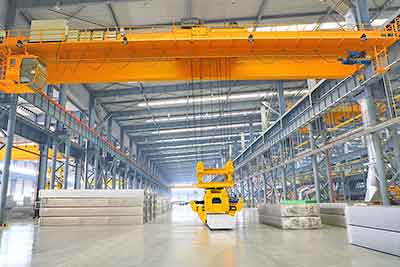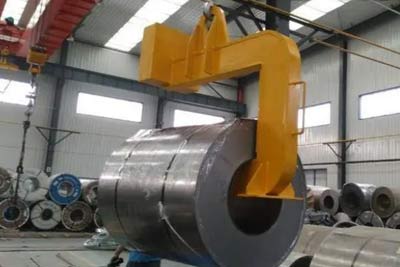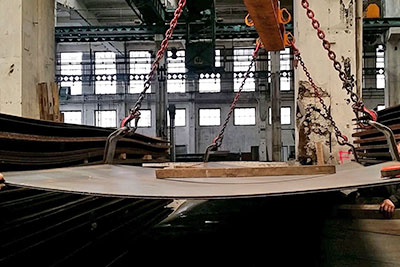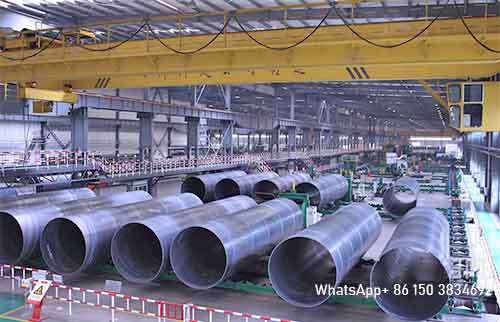Steel Crane Guide :Overview of Overhead Cranes in Steel Mills
Steel mills are some of the most important industrial facilities in the world, producing steel that is used in everything from cars and buildings to appliances and machinery. One of the most critical pieces of equipment in a steel mill is the crane. Steel cranes are used to lift, move, and transport heavy loads of raw materials and finished products throughout the mill. In this comprehensive guide, we will explore everything you need to know about steel cranes, including their types, components, applications, advantages, maintenance, and safety guidelines.
Introduction to Steel Cranes and their importance in steel mills
Steel cranes are essential for the efficient operation of steel mills. They are designed to handle heavy loads of raw materials, such as iron ore, coal, and limestone, as well as finished products, such as steel bars, pipes, and coils. Steel cranes are used to move these heavy loads throughout the mill, from the storage yards to the blast furnaces, rolling mills, and finishing lines.
Steel cranes come in various types and sizes, depending on the specific requirements of the mill. The most common types of steel mill cranes are overhead cranes, gantry cranes, and jib cranes. Each type has its own unique features and benefits, and is designed for specific applications within the mill.
Types of Steel Cranes - Overhead Cranes, Gantry Cranes, Jib Cranes
Overhead Cranes
Overhead cranes, also known as bridge cranes, are the most common type of steel crane used in steel mills. They are designed to move heavy loads horizontally and vertically along a runway system that is mounted on the ceiling of the mill. Overhead cranes consist of a bridge that spans the width of the mill, a trolley that moves along the bridge, and a hoist that lifts and lowers the load. Overhead cranes can be operated from a cab or a remote control, and can handle loads ranging from a few hundred pounds to several hundred tons.
Gantry Cranes
Gantry cranes, also known as portal cranes, are similar to overhead cranes in that they move heavy loads along a runway system. However, instead of being mounted on the ceiling, the runway system is supported by a pair of legs that straddle the load. Gantry cranes are used in outdoor applications, such as loading and unloading ships and trains, as well as indoor applications, such as moving heavy loads from one workstation to another.
Jib Cranes
Jib cranes are smaller steel cranes that are used for lighter loads and shorter distances. They consist of a vertical mast that is mounted on a base, and a boom arm that extends horizontally from the mast. Jib cranes are typically used in workstations where there is limited space or where the load needs to be moved in a specific direction.
10 Ton Overhead Crane InstallationOverhead Cranes in Steel Mills - Components and Design
Overhead cranes are the most common type of steel crane used in steel mills. They are designed to move heavy loads horizontally and vertically along a runway system that is mounted on the ceiling of the mill. Overhead cranes consist of several components, including the bridge, trolley, hoist, runway system, and controls.
- Bridge -The bridge is the main component of the overhead crane. It spans the width of the mill and is supported by a runway system that is mounted on the ceiling. The bridge can be designed in various configurations, such as single girder, double girder, and box girder. The choice of bridge configuration depends on the load capacity, span, and clearance requirements of the mill.
- Trolley -The trolley is the component of the overhead crane that moves along the bridge. It is typically powered by an electric motor and is equipped with wheels or rollers that run along the runway system. The trolley can be designed in various configurations, such as top-running and under-running. The choice of trolley configuration depends on the load capacity and speed requirements of the mill.
- Hoist -The hoist is the component of the overhead crane that lifts and lowers the load. It can be powered by an electric motor or a hydraulic system and can be equipped with various types of hooks, grabs, and magnets, depending on the type of load being lifted. The hoist can be designed in various configurations, such as single-speed and variable-speed. The choice of hoist configuration depends on the load capacity and speed requirements of the mill.
- Runway System -The runway system is the component of the overhead crane that supports the bridge and trolley. It consists of a series of rails that are mounted on the ceiling of the mill. The runway system can be designed in various configurations, such as single girder, double girder, and box girder. The choice of runway system configuration depends on the load capacity, span, and clearance requirements of the mill.
- Controls -The controls are the component of the overhead crane that allows the operator to control the movement of the crane. They can be operated from a cab or a remote control and can be equipped with various safety features, such as limit switches, overload protection, and emergency stop buttons.
Overhead Steel Crane Applications in Steel Mills
Overhead cranes are used in various applications within steel mills, including the following:
- Raw Material Handling -Overhead cranes are used to transport raw materials, such as iron ore, coal, and limestone, from the storage yards to the blast furnaces. They are also used to transport scrap metal and other materials to the recycling area.
- Casting -Overhead cranes are used to lift and transport ladles of molten steel from the furnaces to the casting machines. They are also used to transport ingots and other castings to the rolling mills.
- Rolling -Overhead cranes are used to transport steel bars, pipes, and coils from the casting machines to the rolling mills. They are also used to transport finished products to the storage yards.
- Maintenance -Overhead cranes are used to transport maintenance personnel and equipment to various parts of the mill for repairs and inspections.
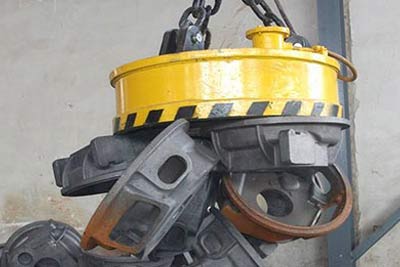 Steel Scrap Electromagnetic Bridge Crane - Electromagnetic bridge crane for steel scrap handling, easy electromagnetic crane with high efficiency. Tailored electromagnetic bridge crane & eot crane.
Steel Scrap Electromagnetic Bridge Crane - Electromagnetic bridge crane for steel scrap handling, easy electromagnetic crane with high efficiency. Tailored electromagnetic bridge crane & eot crane.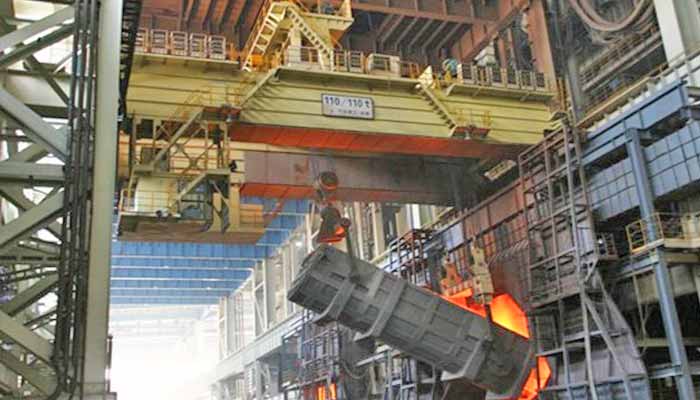 Scrap Charging Crane - Steel Mill Series of Overhead Cranes Steel mill overhead cranes for charging scraps & hot metals, heavy duty, automatic & semi automatic features, high safety. Check Scrap Charging Crane!
Scrap Charging Crane - Steel Mill Series of Overhead Cranes Steel mill overhead cranes for charging scraps & hot metals, heavy duty, automatic & semi automatic features, high safety. Check Scrap Charging Crane!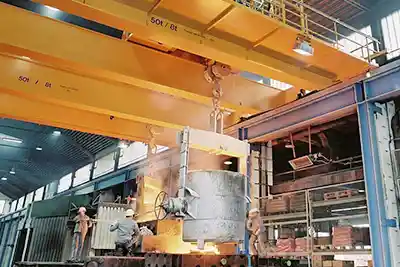 Ladle Crane for Hot Metal Handling, Double Girder Ladle Crane 3 Ton, 5 Ton up to 74 Ton
Ladle Crane for Hot Metal Handling, Double Girder Ladle Crane 3 Ton, 5 Ton up to 74 Ton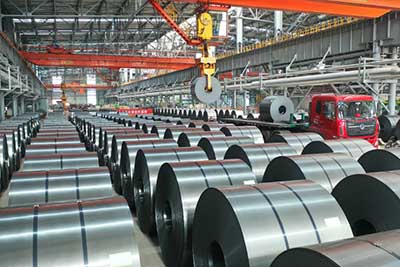 Double Girder Overhead Crane for Steel Rolling Mill -Double girder eot cranes processed for steel mill to improve your efficiency & safety. Hot & cold steel rolling cranes overview for your reference. Check now.
Double Girder Overhead Crane for Steel Rolling Mill -Double girder eot cranes processed for steel mill to improve your efficiency & safety. Hot & cold steel rolling cranes overview for your reference. Check now.There are several types of cranes used in the steel industry for handling different materials and performing various tasks. Some of these cranes include:
- Bulk handling overhead cranes are used to handle bulk materials such as coal, ore, and other raw materials.
- Scrap yard overhead cranes are used to handle scrap metal in scrap yards.
- Slag handling overhead cranes are used to handle slag, a byproduct of the steelmaking process.
- Charging crane - In steel-smelting furnace facilities, overhead cranes are utilized to feed scrap or ore into the furnace.
- Ladle overhead cranes are used to transport and pour molten metal from ladles, which are enormous containers.
- Tusish crane - Overhead cranes for tundishes are used to carry tundishes, which are containers used to hold molten metal during the continuous casting process.
- Slab handling crane - Overhead cranes for slab handling are used to transport slabs, which are huge, flat pieces of steel that can be further processed into final goods.
- Overhead cranes for billet handling are used to handle billets, which are semi-finished pieces of metal that can be further processed into completed items
- Coil handling overhead cranes are used to transport steel coils that will be further processed into finished goods.
- Long product handling overhead cranes are used to handle long products such as H-beams, bars, rods, round tubes, and rectangular tubes.
- Plate handling overhead cranes are used to handle plates of steel, which can be further processed into finished products
- Service and maintenance overhead cranes are used for performing maintenance tasks on equipment and machinery.
Types of steel loads handled by steel cranes
Steel mill overhead cranes are used to handle a variety of steel products throughout the entire steel production process. These cranes are designed to handle different types of steel products such as steel piles, steel rebar, steel plates, steel sheets, and other steel products 1. Some of the types of steel productions that can be handled by steel mill overhead cranes include:
- Bulk handling of raw materials such as coal, ore, and other raw materials.
- Scrap handling of scrap metal in scrap yards.
- Slag handling of slag, a byproduct of the steelmaking process.
- Furnace charging for loading scrap or ore into the furnace in steel-smelting furnace units.
- Ladle handling for transporting and pouring out molten metal.
- Tundish handling for holding molten metal during the continuous casting process.
- Slab handling for transporting and processing large, flat pieces of steel.
- Billet handling for transporting and processing semi-finished pieces of metal.
- Coil handling for transporting and processing coils of steel.
- Long product handling for transporting and processing long products such as H-beams, bars, rods, round tubes, and rectangular tubes.
- Plate handling for transporting and processing plates of steel.
Advantages of Overhead Cranes in Steel Mills
Overhead cranes offer several advantages over other types of steel cranes, including the following:
- Increased Efficiency -Overhead cranes can move heavy loads quickly and efficiently, reducing the time and labor required to transport materials and products throughout the mill.
- Improved Safety -Overhead cranes can be equipped with various safety features, such as limit switches, overload protection, and emergency stop buttons, to ensure the safety of the operators and other personnel in the mill.
- Greater Flexibility -Overhead cranes can be designed to handle a wide range of load capacities and configurations, making them suitable for various applications within the mill.
- Reduced Maintenance Costs -Overhead cranes require less maintenance than other types of steel cranes, reducing the overall maintenance costs of the mill.
Smart Features of Steel Cranes in Steel Mills
Steel mill cranes can be equipped with a variety of smart features to improve safety, efficiency, and productivity. Some of these smart features include:
- Sway Control: This feature limits load swing by controlling the bridge and trolley acceleration and deceleration. It enables faster load handling and more precise positioning, while also lowering the risk of harm to the load, crane, and surrounding region .
- Snag Prevention: This feature stops all crane movement if the hook, sling, or load accidentally gets caught on something. It lowers the risk of dangerous situations while moving loads and aids in the prevention of damage to the cargo, crane, and surrounding area 1.
- Adaptive Speed Range (ASR): This feature allows for optimization of the speed of the crane.An empty hook can move at more than twice the speed of a loaded hook, allowing the operator to select the most effective method of controlling the hoist .
- Assisted Load Turning: This feature helps turn the load by keeping the ropes straight and eliminating side pull. It simplifies and reduces the danger of one of the most difficult crane operations .
- Hook Centering: This feature eliminates side pull during lifting by automatically positioning the bridge and trolley directly over the load. It translates to fewer wear and tear on your crane's components, shorter load cycle times, and greater ease of operation .
- Protected Areas Working Limits: These features allow you to define protected zones where the crane is not allowed to enter. They construct temporary "virtual walls" against which your crane is meant to automatically stop.
Automation -Steel cranes are being equipped with advanced automation technologies, such as artificial intelligence and machine learning, to improve their performance and reduce the risk of accidents.
Remote Monitoring -Steel cranes are being equipped with remote monitoring systems that allow operators to monitor their performance and maintenance needs from a central location.
Maintenance and Safety Guidelines for Steel Cranes
Proper maintenance and safety guidelines are essential for the safe and efficient operation of steel cranes in steel mills. The following are some of the key maintenance and safety guidelines for steel cranes:
- Regular Inspections -Steel cranes should be inspected regularly to ensure that they are in good working condition. The inspections should include the bridge, trolley, hoist, runway system, and controls.
- Preventive Maintenance -Steel cranes should be maintained regularly to prevent breakdowns and prolong their lifespan. The preventive maintenance should include lubrication, cleaning, and replacement of worn-out parts.
- Operator Training -Steel crane operators should be properly trained and certified to operate the crane safely and efficiently. The training should include the proper use of controls, safety features, and emergency procedures.
- Safety Features -Steel cranes should be equipped with various safety features, such as limit switches, overload protection, and emergency stop buttons, to ensure the safety of the operators and other personnel in the mill.
Choosing the Right Steel Crane for Your Steel Mill
Choosing the right steel crane for your steel mill depends on several factors, including the load capacity, span, and clearance requirements of the mill. The following are some of the key factors to consider when choosing a steel crane:
- Load Capacity -The load capacity of the steel crane should be sufficient to handle the heaviest loads in the mill, including raw materials and finished products.
- Span -The span of the steel crane should be sufficient to cover the entire area of the mill where it will be used.
- Clearance Requirements -The clearance requirements of the steel crane should be sufficient to allow the crane to move freely throughout the mill without obstruction.
- Type of Load -The type of load being handled by the steel crane should be considered when choosing the type of crane, as different types of cranes are designed for different types of loads.
- Safety: Safety is an important factor to consider when purchasing a steel mill crane. Customers should ensure that the crane they select has appropriate safety features such as emergency stop buttons, overload prevention, and anti-collision systems .
- Durability: Durability is an important factor to consider when purchasing a steel mill crane. Customers should ensure that the steel crane they select is constructed of high-quality materials and is built to resist the wear and tear of the steel manufacturing process.
- Cost: Cost is an important factor to consider when purchasing a steel mill crane. Customers must ensure that the crane they select is within their budget.
Leading Manufacturers of Steel Cranes in European countries
There are several leading manufacturers of steel cranes in the world, including the following:
- Konecranes- Konecranes is a leading manufacturer of overhead cranes, gantry cranes, and jib cranes. The company has a global presence and offers a wide range of cranes for various applications in steel mills.
- Demag -Demag is a leading manufacturer of overhead cranes, gantry cranes, and jib cranes. The company has a global presence and offers a wide range of cranes for various applications in steel mills.
- Manitowoc -Manitowoc is a leading manufacturer of gantry cranes and jib cranes. The company has a global presence and offers a wide range of cranes for various applications in steel mills.
Leading steel crane manufacturer in China
- Zoomlion Heavy Industry Science & Technology Co., Ltd.: Zoomlion is a leading manufacturer of construction and agricultural machinery, including cranes, excavators, and concrete machinery. The company was founded in 1992 and is headquartered in Changsha, Hunan Province.
- Sany Group Co., Ltd.: Sany is a global manufacturer of construction and mining equipment, including cranes, excavators, and concrete machinery. The company was founded in 1989 and is headquartered in Changsha, Hunan Province.
- XCMG Group: XCMG is a leading manufacturer of construction machinery and equipment, including cranes, excavators, and loaders. The company was founded in 1943 and is headquartered in Xuzhou, Jiangsu Province.
- Henan Yuantai Crane Co., Ltd.: A Specialized overhead cranes and gantry crane maufactuerer and supplier, provide all types of industrial use steel cranes, customized for specific use, which is locaded in Changyuan Xinxing, the origin of Chinese overhead cranes.
- Taiyuan Heavy Industry Co., Ltd.: Taiyuan Heavy Industry is a leading manufacturer of heavy-duty machinery and equipment, including cranes, excavators, and mining equipment. The company was founded in 1950 and is headquartered in Taiyuan, Shanxi Province.
- Nucleon (Xinxiang) Crane Co., Ltd.: Nucleon is a leading manufacturer of overhead cranes, gantry cranes, and jib cranes for various industries. The company was founded in 2005 and is headquartered in Xinxiang, Henan Province.
How to select an steel crane manufacturer and supplier?
When selecting a steel overhead crane manufacturer and supplier, it’s important to consider the following factors:
- Experience: Look for a manufacturer with experience in designing and building steel overhead cranes. This will ensure that they have the knowledge and expertise to provide you with a high-quality product.
- Reputation: Research the reputation of the manufacturer to ensure that they have a track record of providing reliable and durable cranes.
- Customization: Look for a manufacturer that can customize their cranes to meet your specific needs. This will ensure that you get a crane that is tailored to your requirements.
- Service and Support: Choose a manufacturer that offers good service and support. This will ensure that you have access to assistance if you encounter any issues with your crane.
Conclusion
Steel cranes are essential for the efficient operation of steel mills. They are designed to handle heavy loads of raw materials and finished products throughout the mill. Steel cranes come in various types and sizes, depending on the specific requirements of the mill. The most common types of steel cranes are overhead cranes, gantry cranes, and jib cranes. Each type has its own unique features and benefits, and is designed for specific applications within the mill. Proper maintenance and safety guidelines are essential for the safe and efficient operation of steel cranes in steel mills. The future of steel cranes in steel mills looks promising, as new technologies and innovations are being developed to improve their performance and efficiency.


